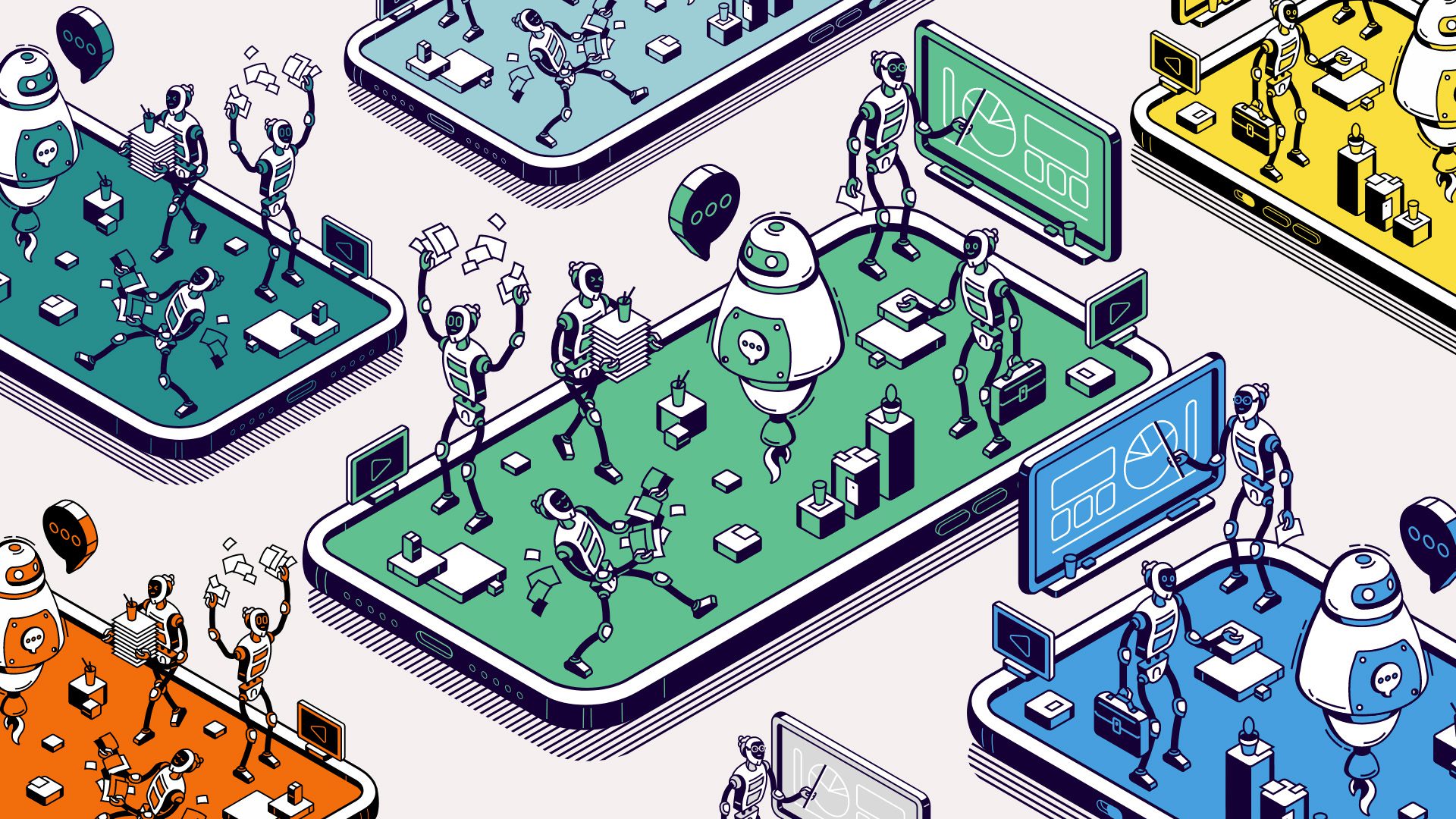In spite of market adjustments and layoffs in tech, our annual survey of corporate vitality (an AI-based predictor of future growth potential) reveals that new technologies—AI being the most celebrated today—are set to continue to drive corporate growth for the next decade.
So should you just embrace and implement the latest digital technologies to be elevated by the rising tide?
It’s not so simple. There have been many false technological dawns. More importantly, even for new technologies that eventually become ubiquitous, not all players emerge as winners. Think of your firm’s last big IT implementation. According to Bent Flybjerg, there is a 99.5% chance you were disappointed with its impact, cost, or speed.
It would certainly be premature to be declare victory with AI. The advances in LLMs, deep learning, big data, and cloud computing are real, but according to Harvard Professor Karim Lakhani, less than 10 percent of executives use individual generative AI tools every day.
The number of companies creating and using propriety enterprise-level applications is even lower. To turn a new technology into a growth engine, it needs to be economically transformative at the level of whole enterprises, not just individual users. Consider Thomas Watson’s decision to change the name of CTR (Computing-Tabulating-Recording Company) to International Business Machines, to escape the framing of an individually used office appliance. The real question for executives, then, is how to design effective whole enterprise implementations or “business machines” (combinations of technologies and processes) that create a new, more effective and proprietary way of fulfilling a valuable customer need.
What happens when new technologies are introduced?
A brief look at the history of technologies shows that we must distinguish between primary technologies, like LLMs, and their enterprise applications. Historian of technology Carlota Perez points out that there are always two waves of technological innovation; the second slower—but more impactful—one involves adapting organizational structures and processes to fully leverage the technology. Think of electricity and the electric motor compared to the eventual reorganization of factories around them, which revolutionized manufacturing.
The benefits from early applications are typically focused on incremental efficiency gains within the current business model. For 19th century manufacturers, the initial question was whether replacing steam with electric power justified the investment costs. The equivalent question today is for whether you want to use an AI-powered chatbot to answer frequent customer inquiries more efficiently.
But more importantly, a historic perspective allows us to ask: What can we learn from later, more transformative applications, like air transportation or factory automation, and failed ones, like knowledge management systems or virtual reality platforms?
Here are five critical lessons:
- Clarity on the specific valuable problem we want to solve. On the one hand, while the intriguing technical possibilities of the metaverse hit the headlines, the more fundamental issue has been, “why would anybody spend their day in a virtual world?” For those inclined to do so, there are already slick video games. Air transport, on the other hand, reduced the time and cost of reaching distant places, facilitating both business and tourism.
- Getting to a sound business case. Not all functionality is net positive when considering rewards, costs and risks. But how to figure out which business case will work? Experimentation is the most fruitful approach, given the intrinsic unpredictability of technological evolution. Ford Motors, for example, experimented with different layouts of the assembly line. More recently, Alibaba experimented with three fundamentally different online shopping models—search-based, like Google; mall-based, like Tmall; and general store–based, like Amazon. It turned out that each worked best for a different market segment, despite the prior expectation that one format would dominate.A related consideration is whether your company has sufficient resources to overcome inevitable pushback from vested interests if successful. At Ford, for example, the gains from mass manufacturing came under threat during a series of strikes in 1913. Workers resisted the pressure and monotony of the new process. By doubling wages and reducing daily shifts by an hour, the dispute was ended—an option available only to resource rich companies.
- The design of the new business system. This is not just a fruitful intersection of people, processes, and machines (a hurdle knowledge management systems never quite overcame), but also the larger internal systems landscape of companies and their external ecosystems. One of the big obstacles for self-driving cars in the U.S., for example, is the multiple layers of regulations and interactions with critical supporting industries like insurance. In contrast, in a late 19th century transport revolution, the railroads benefitted from a close relationship with government, which resulted in land grants, tax breaks, and regulatory exemptions.
- The importance of evolvability. No technology or application is born perfect. As former head of innovation for Intuit Roy Rosin noted, “the best ideas are the ones which have the most chances to evolve.” Air transport became safe and therefore ubiquitous through the adaptive learning protocols of accident investigation. And in a second wave of innovation, low-cost airlines piloted and perfected new business models, dramatically driving down costs.
- The governance for introducing and operating new technologies. Is your AI initiative overseen by aging executives who don’t understand technology well (according to a recent survey by analytics firm FICO, 65% of executives cannot explain how their AI models make decisions) or technologists optimizing for functional effect? Or is it guided by sound strategy and economics? And who ensures that the system maintains fitness for purpose in a changing world? With structural labor shortages already high on the executive agenda, it is clear that governance will be especially critical for AI, with both its potential to substitute and complement labor and also to be regarded as a threat by increasing powerful labor.
The intrinsically social nature of the second wave of technological progress explains why it typically takes so long. Persuading individual users to try a new technology can happen very fast, but changing the mental model, operating model, and processes of a company is much more complex. For example, as new types of expertise emerge, it requires training, reskilling, and new ways of organizing.
How this translates for GenAI
Are LLMs, the latest hot technology, any different? In aggregate, no; all the issues above will need to be thought through by companies to move beyond novel tools for individuals to become successful enterprise applications. The twist is that cognitive technologies are much closer to humans in their capabilities, so we must probe deeper in designing our business model architectures—looking at what humans will do, what machines will do, where one will support and communicate with the other, and how organizations will be reconceived for cognitive synergy. Compared to previous technology waves, AI has the advantage of rapid learning loops, as the “consumption” of AI generates data which can be used to perpetually improve the learning algorithm. This should reduce the cost of experimenting—which Big Tech is already intimately familiar with in the form of A/B testing—and speed up technical and business model evolution.
The techno-optimists could still turn out to be wrong about AI, despite their current euphoria: AI gains might plateau, reactionary forces might impede progress, the long run costs of training and computing might limit application potential, or the second enterprise innovation wave might be a long time coming. However, to create option value, we must embrace the possibility that the techno-optimists might be right. At the same time, such optimism must be accompanied by the discipline of building effective “business machines”—learning from the lessons of technology history.






